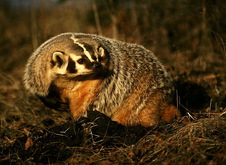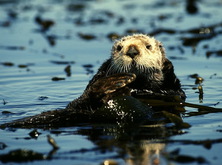Local animals in this group:
weasels, badgers, and relatives
Mustelidae
This group is the largest and most diverse of the carnivore group. There are 65 species in this group, which includes, weasels, badgers, ferrets, stoats, polecats, mink, martens, wolverines, fishers, skunks, and otters. They are found on every continent except Australia and Antarctica. These animals vary a lot in size and body shape but tend to be small (the least weasel is the smallest, ranging from 35 to 70 grams) to medium-sized (sea otters are 35 to 40 kg) and have long bodies with relatively short legs. They have short faces with rounded ears, small eyes, and medium to long tails. Many members of this group are hunted for their fur, which is soft and dense.
Most members of this group are meat-eaters, but many also eat invertebrates, fruit, carrion, and honey. They are agile, quick, and often aggressive. Members of this group are efficient predators and are capable of capturing and killing prey as large as they are. Prey is usually killed with a bite to the back of the skull or neck. Many members of this group use their long, thin bodies to chase and capture rodents in their burrows. They have keen senses of smell and hearing.
Weasels, badgers, and their relatives all have well-developed anal scent glands which give off a strong and clinging odor. Scent marking is widely used and, in the case of skunks, these glands are used in self-defense.
Weasels, badgers, and their relatives are found in a wide variety of habitats, from arctic tundra to tropical regions.












